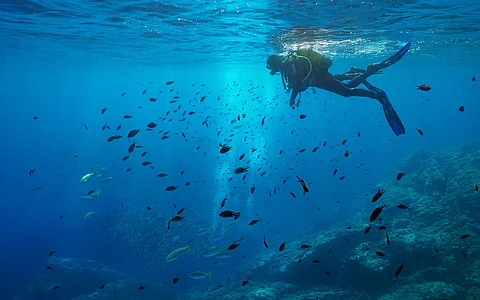

A new global initiative called ‘Revive Our Ocean’ was launched on April 24, 2025, with a goal to scale up effective, community-led marine protected areas (MPAs) through local action.
The initiative hopes to remove key barriers that prevent coastal communities from protecting and managing their ocean spaces and aims to inspire, enable and equip communities to lead marine conservation efforts.
It is rooted in successful models from across the world and will initially focus on seven countries: the UK, Portugal, Greece, Turkey, the Philippines, Indonesia and Mexico.
The 30X30 target of the Kunming-Montreal Global Biodiversity Framework (KMGBF) aims to protect 30 per cent of the oceans by 2030.
Though more than 16,000 MPAs have been established globally, amounting 8 per cent of the world’s oceans, only three per cent are currently under full protection, according to the Protected Planet Report, 2024.
Most of these MPAs are either poorly managed or allow damaging activities like bottom trawling.
MPAs are parts of the ocean that are set aside for long-term conservation of marine resources. They are governed in different ways. Some are managed by national governments, others by local authorities, NGOs or through co-management with communities.
Positive examples of community-led MPAs include Medes Island in Spain. This is a small no-fishing zone which is just one square kilometre in size but brings in €16 million every year from diving tourism. That’s 25 times more than what fishing earns in the same area.
Similarly, creating a no-fishing zone on Scotland’s Isle of Arran helped marine life come back. The number of plants and animals on the seabed has more than doubled, and nearby waters are also seeing more life.
In the Philippines, RARE’s Fish Forever program has helped over 2,000 communities set up no-fishing zones. In five years, the amount of fish in those areas doubled.
Another group, Coastal 500, includes more than 350 mayors and local leaders who share knowledge and push for better policies, like banning industrial fishing near their shores.
Why aren’t there more MPAs that are governed by communities? According to the team behind Revive Our Ocean, three barriers stand in the way: lack of awareness about the benefits, national policies that restrict local governments from creating MPAs and lack of tools and support for how to do it effectively.
To overcome these challenges, Revive Our Ocean has created a network called the Revive Our Ocean Collective, that brings together local leaders and groups who have already made community-led marine protection work.
The initiative is led by ocean conservation veterans Kristin Rechberger, chief executive of Dynamic Planet and Enric Sala, marine ecologist and founder of National Geographic Pristine Seas.
The initiative also plans to launch a microfinance program to help communities get loans and grants for starting or expanding their own protected areas.
One of the biggest goals of the initiative is to end destructive fishing practices, especially bottom trawling. This method drags heavy nets along the sea floor, destroying habitats and stirring up carbon stored in the ocean bed.
According to Sala, bottom trawling is not only harmful to the environment, but also costly. His research shows it causes a €11 billion loss every year in Europe.
Revive Our Ocean also wants to change the idea that MPAs are just a costly venture. Instead, they can be smart, self-sustaining investments. Tourism and sustainable fishing can pay for monitoring and protection. In some places, like Spain, a marine reserve that costs €2 million per year to manage brings in €16 million in returns.
“Leave areas of the ocean alone and they bounce back to life,” said Rechberger at the virtual launch. Marine life inside MPAs returns spectacularly. These areas regenerate biodiversity, bring in tourism, create jobs, ensure food security and even help fight climate change by capturing carbon, she added.